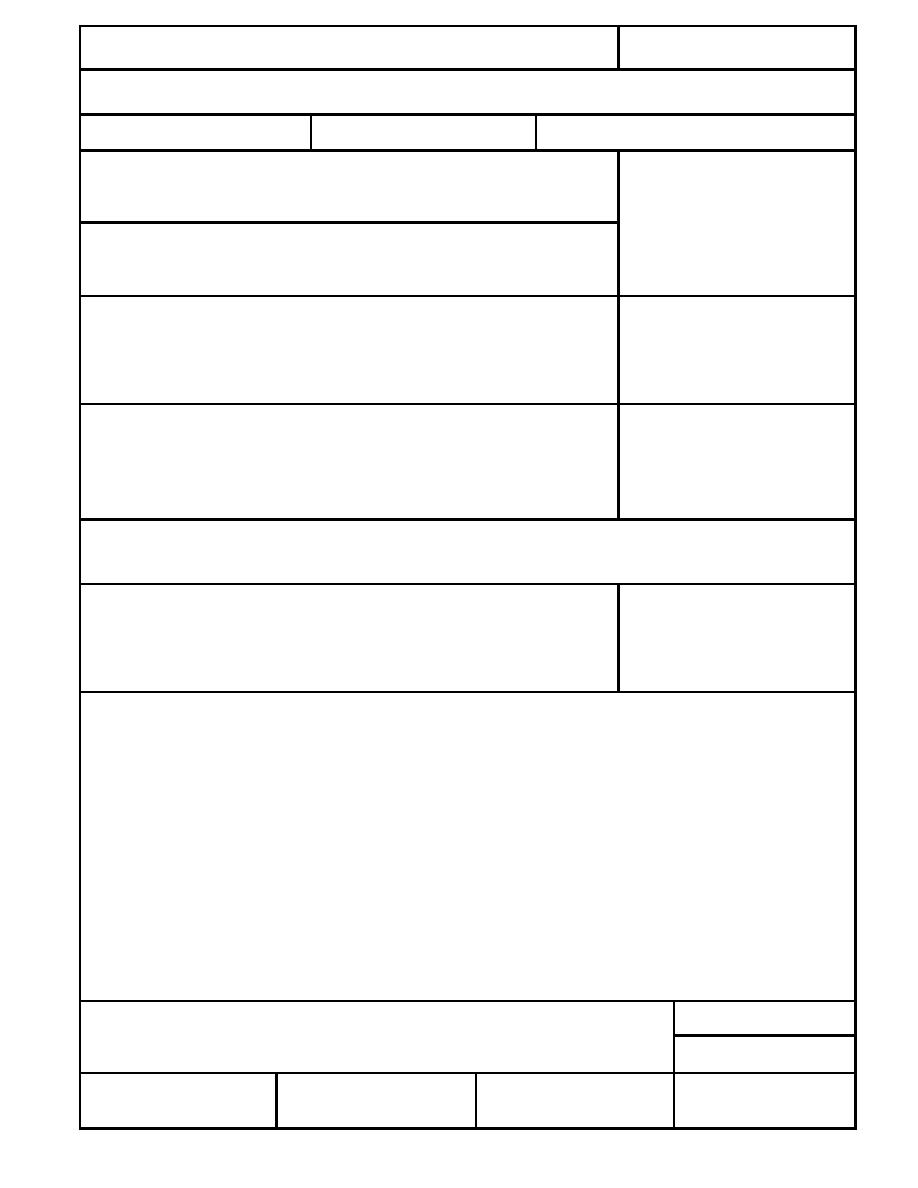
Form Approved
REPORT DOCUMENTATION PAGE
OMB No. 0704-0188
Public reporting burden for this collection of information is estimated to average 1 hour per response, including the time for reviewing instructions, searching existing data sources, gathering and
maintaining the data needed, and completing and reviewing the collection of information. Send comments regarding this burden estimate or any other aspect of this collection of information,
including suggestion for reducing this burden, to Washington Headquarters Services, Directorate for Information Operations and Reports, 1215 Jefferson Davis Highway, Suite 1204, Arlington,
VA 22202-4302, and to the Office of Management and Budget, Paperwork Reduction Project (0704-0188), Washington, DC 20503.
1. AGENCY USE ONLY (Leave blank)
2. REPORT DATE
3. REPORT TYPE AND DATES COVERED
August 1995
4. TITLE AND SUBTITLE
5. FUNDING NUMBERS
Development of a Field Method for Quantifying Ammonium Picrate
and Picric Acid in Soil and Water
6. AUTHORS
Philip G. Thorne and Thomas F. Jenkins
7. PERFORMING ORGANIZATION NAME(S) AND ADDRESS(ES)
8. PERFORMING ORGANIZATION
REPORT NUMBER
U.S. Army Cold Regions Research and Engineering Laboratory
72 Lyme Road
Special Report 95-20
Hanover, New Hampshire 03755-1290
9. SPONSORING/MONITORING AGENCY NAME(S) AND ADDRESS(ES)
10. SPONSORING/MONITORING
AGENCY REPORT NUMBER
U.S. Army Environmental Center
Aberdeen proving Ground, Maryland
SFIM-AEC-ET-CR-95010
11. SUPPLEMENTARY NOTES
12a. DISTRIBUTION/AVAILABILITY STATEMENT
12b. DISTRIBUTION CODE
Approved for public release; distribution is unlimited.
Available from NTIS, Springfield, Virginia 22161
13. ABSTRACT (Maximum 200 words)
Methods for the detection and quantification of ammonium picrate and picric acid in soil and water were
developed. Picrate ions were extracted from water directly or from acetone extracts of soil by solid-phase, acidic,
ion-exchange materials. Elution from the ion exchangers was accomplished by converting the retained picrate to
picric acid using strong aqueous, acidorganic solvent mixtures. The resulting colorless solution was then
converted back to a colored picrate solution by dilution with water. Quantification and correction for background
interferences were based on spectrophotometric measurements. A colorimetric, chemical confirmation of picrate
was possible for the water method. The method detection limits were determined to be 1.3 g/g for soil and 3.6
g/L for water. Both methods can be implemented under field conditions.
14. SUBJECT TERMS
15. NUMBER OF PAGES
28
Ammonium picrate
Picric acid
16. PRICE CODE
Field methods
17. SECURITY CLASSIFICATION
18. SECURITY CLASSIFICATION
19. SECURITY CLASSIFICATION
20. LIMITATION OF ABSTRACT
OF REPORT
OF THIS PAGE
OF ABSTRACT
UNCLASSIFIED
UNCLASSIFIED
UNCLASSIFIED
UL
Standard Form 298 (Rev. 2-89)
NSN 7540-01-280-5500
Prescribed by ANSI Std. Z39-18
298-102



 Previous Page
Previous Page
